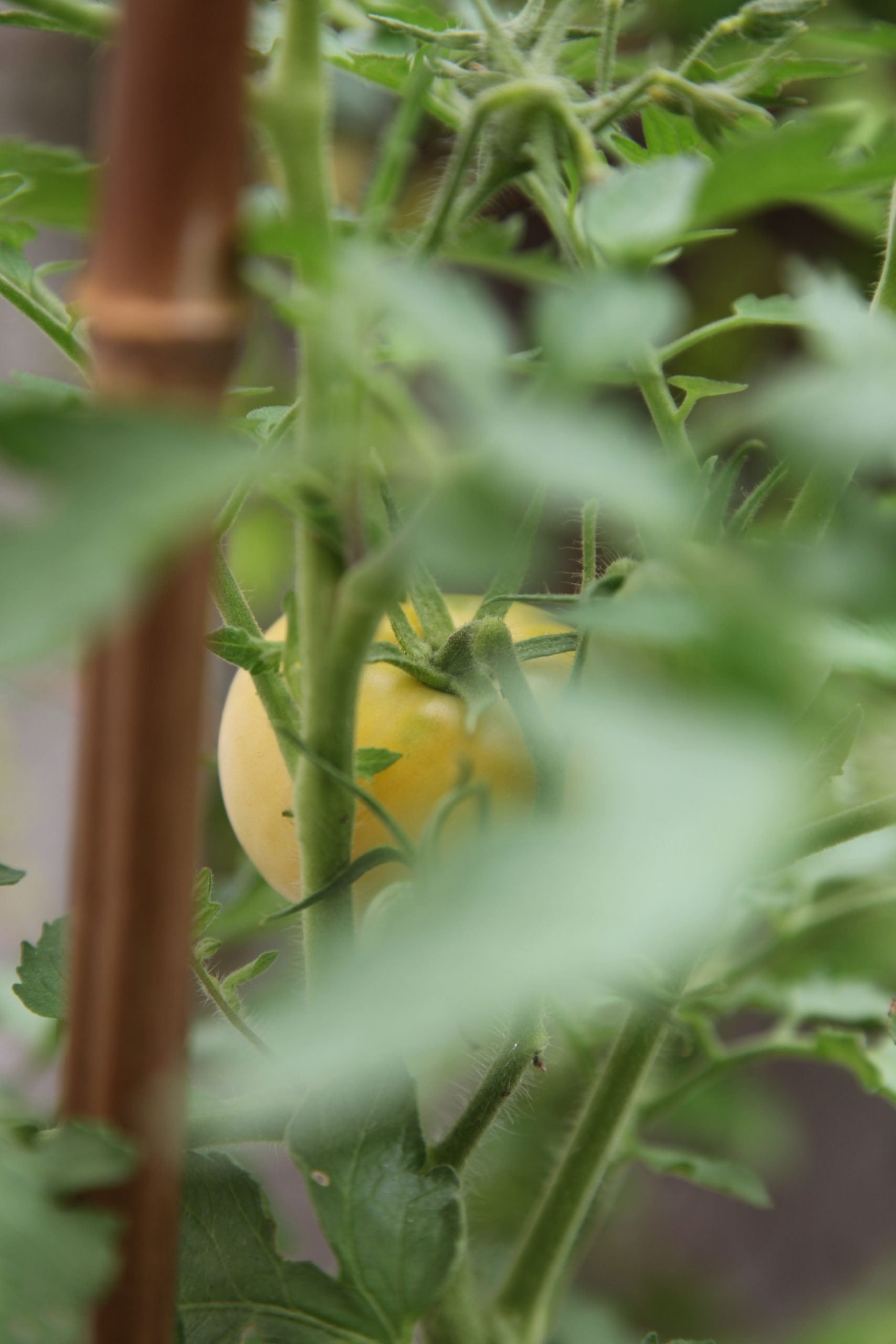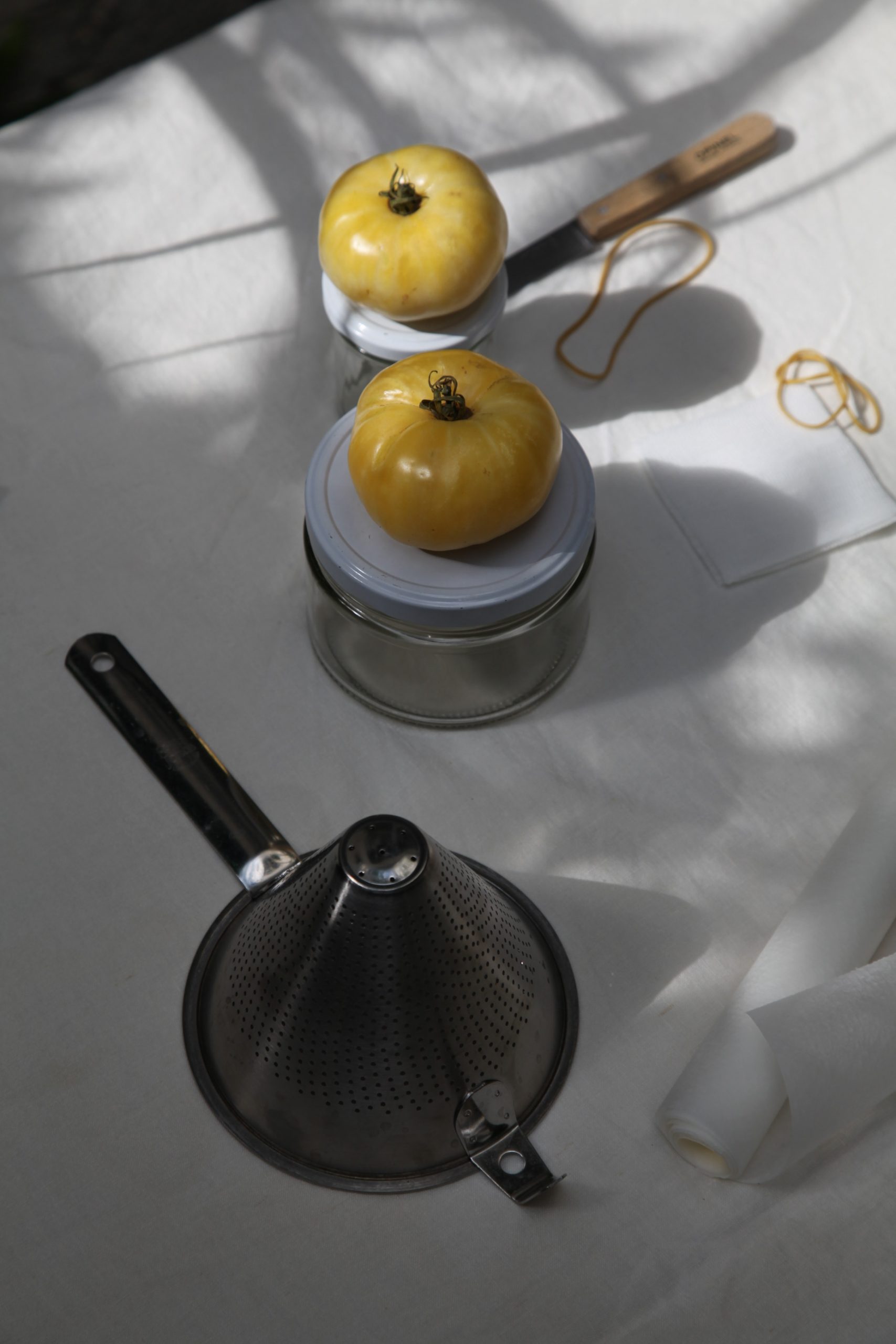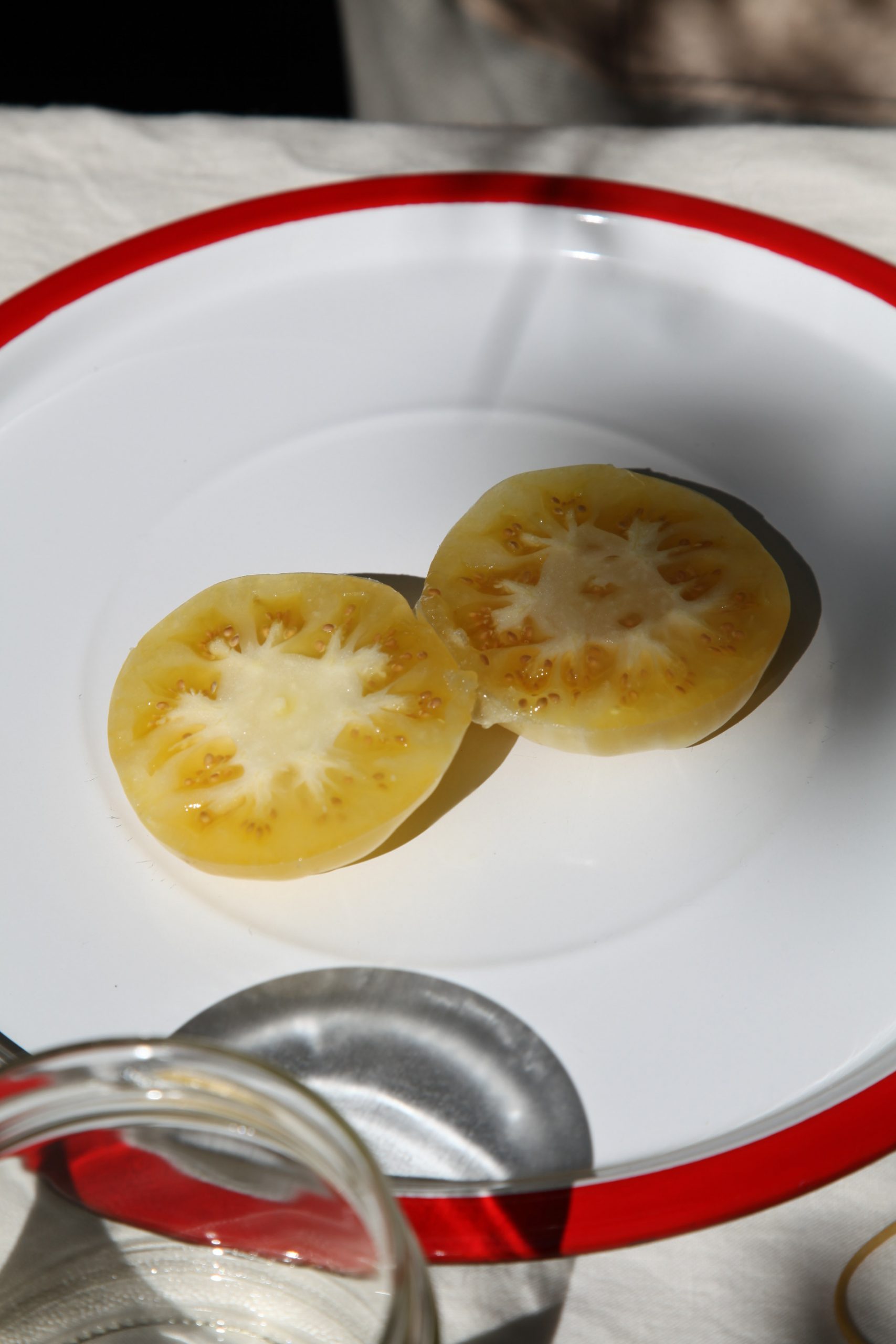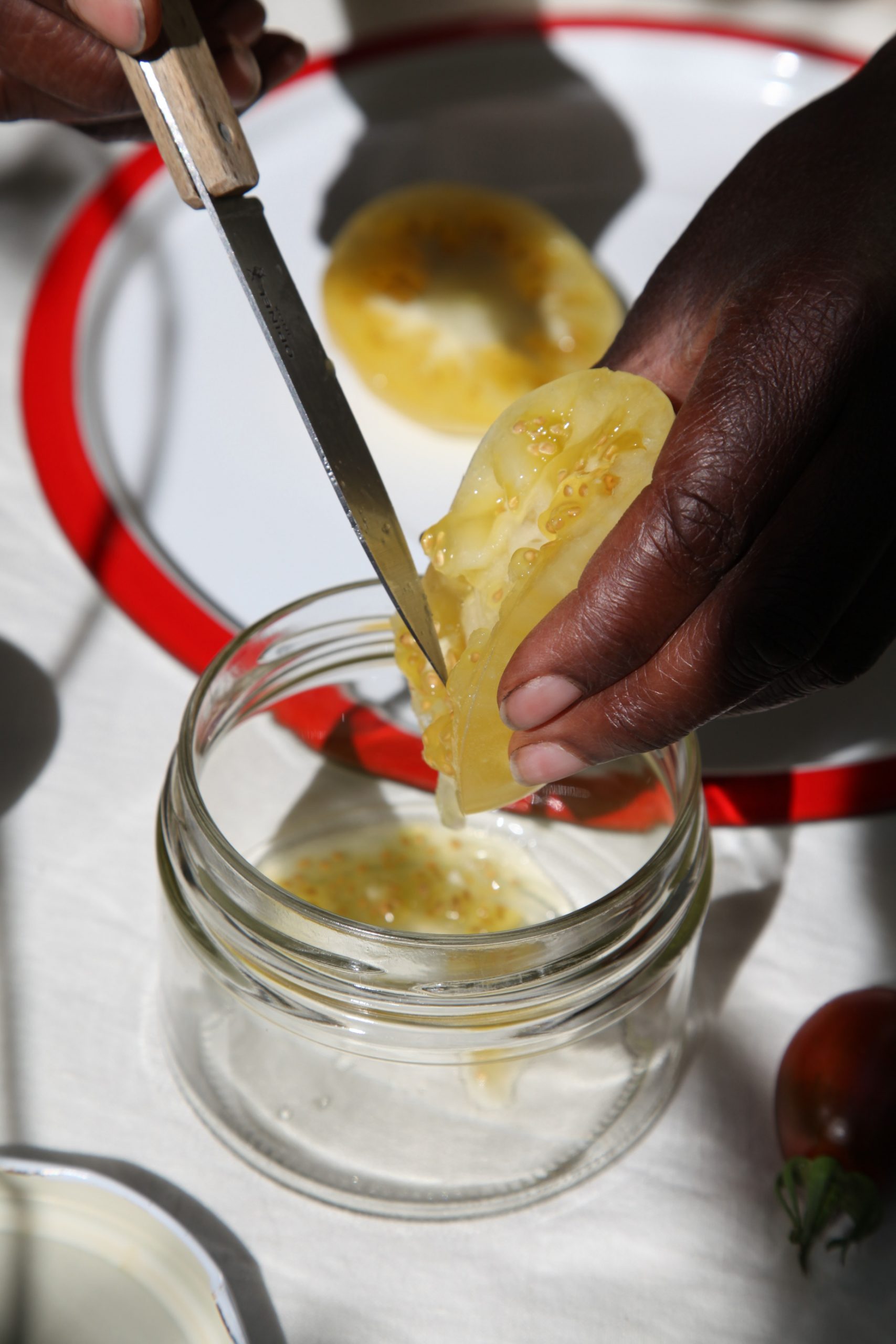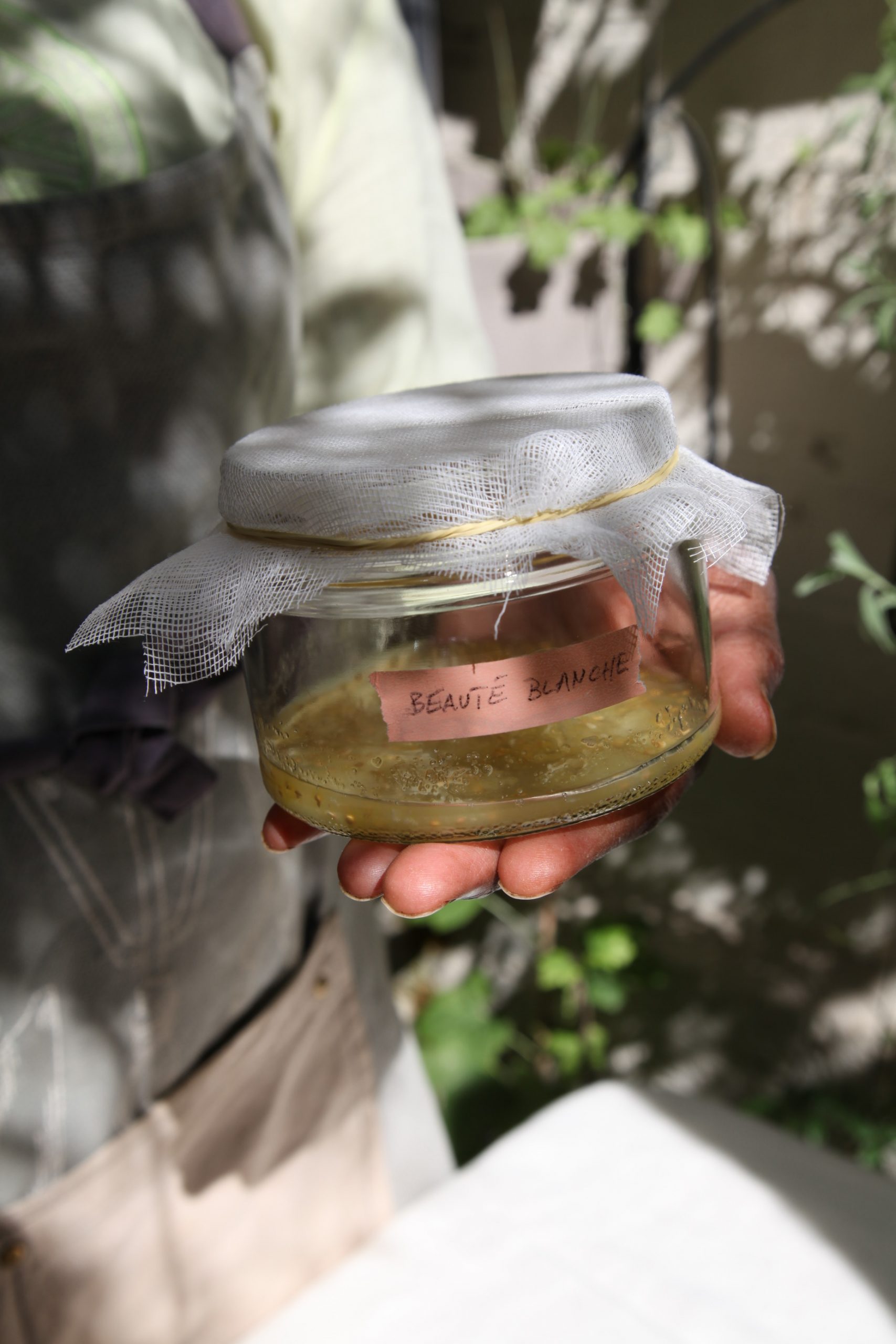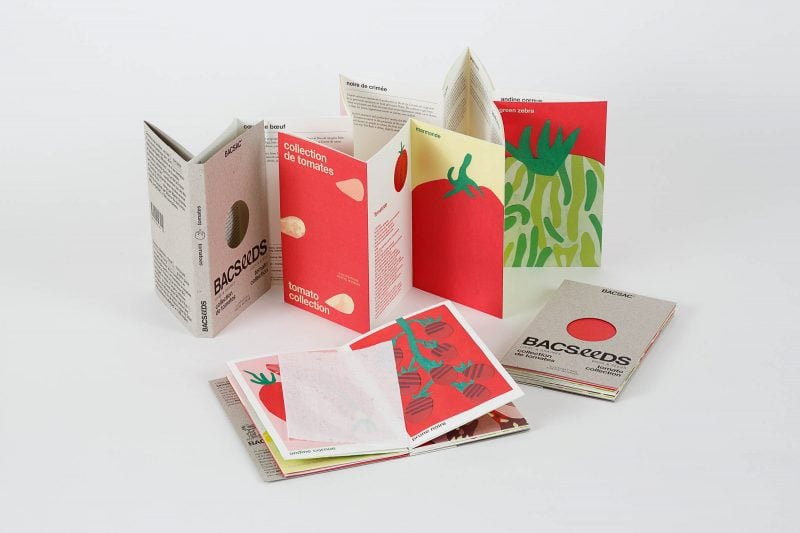Episode #4: Collecting and preserving tomato seeds with Valéry Tsimba
We've come full circle! Our BACSEEDS tomato seeds BACSEEDS germinated, the seedlings took root on our roof garden, and now, as the beautiful ripe fruits appear, we can collect the seeds. With the help of Valéry Tsimba who has accompanied us on this crazy adventure from sowing to harvesting, here's how to collect your tomato seeds using the fermentation technique.
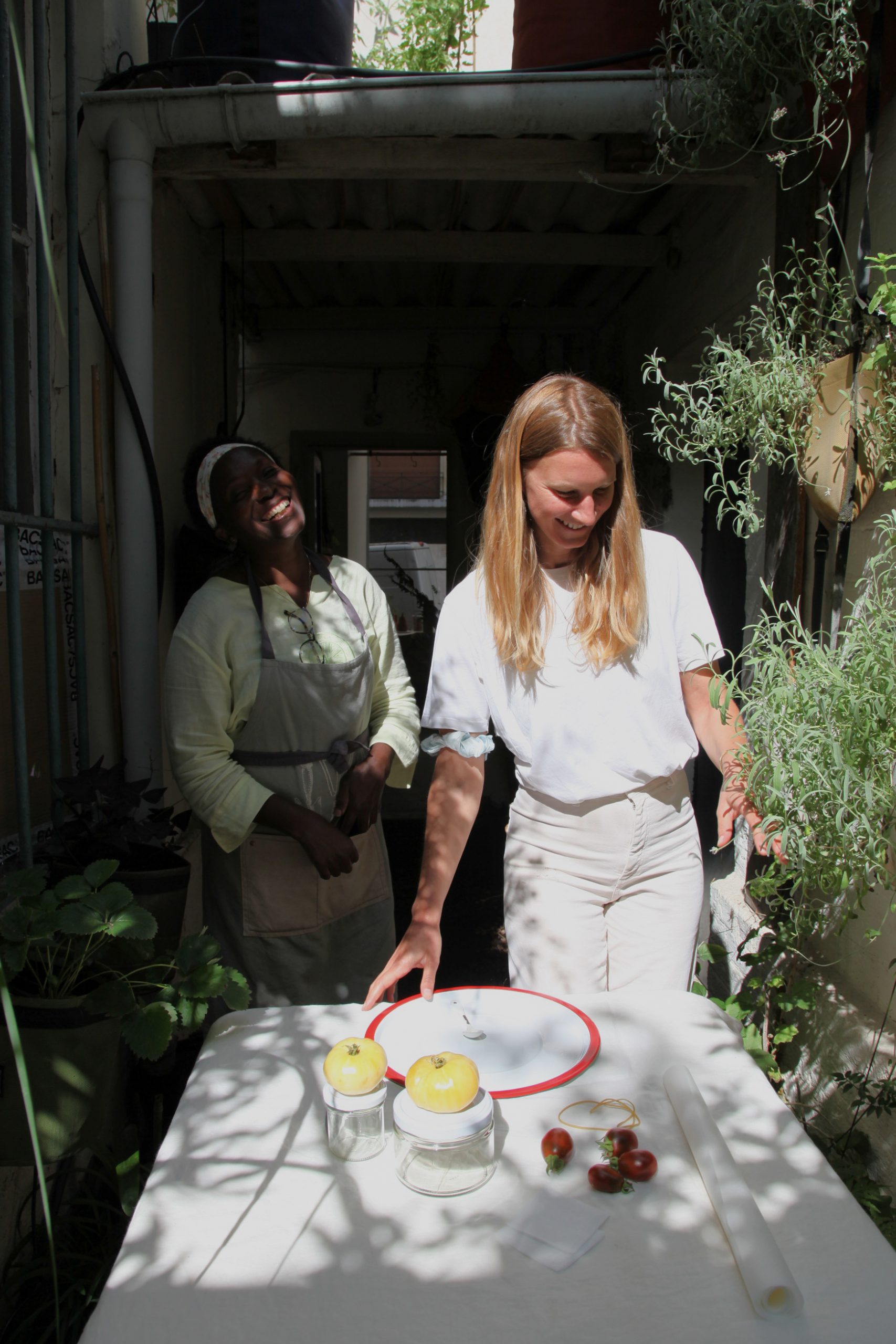
From seed to seed
Produced by La Semence Bio et issues d’une agriculture paysanne française, les semences contenues dans notre collection BACSEEDS sont reproductibles afin que vous puissiez les collecter, les cultiver et les partager à l’infini ! NB : certaines variétés achetées dans le commerce peuvent porter la mention F1 ; cela signifie qu’elles ne sont pas reproductibles mais à usage unique.
Selecting the right fruit
To obtain quality seeds, choose a healthy, vigorous, productive plant and pick ripe fruits with the shape and colour characteristics of the chosen variety. Taste them as well, to make a selection based on their gustative qualities. Seeds retain a memory of the conditions in which they were grown: for instance, discard plants that have suffered from disease or stress, or whose growth was affected by inadequate sun exposure.
Supplies
- Jar, glass or bowl
- Fine-mesh sieve
- Knife
- Gauze or muslin
- Élastique
- Coffee filter, cloth or fine mesh screen
Collecting seeds by fermentation
Fermentation consists of extracting the seed from its gelatinous envelope, the role of which is to protect and maintain the seed in a dormant state so that it does not germinate inside the fruit. The fungus responsible for this fermentation (Geotrichum Candidum) will destroy the gelatin and eliminate any germs present on the seed.
- Cut the tomato in half, cross-wise.
- Using the tip of a knife, squeeze the juice and seeds into a glass, bowl or jar. Label the container.
- Si la variété n’est pas très juteuse : ajoutez ⅓ d’eau pour ⅔ de jus et de graines.
- Cover with gauze or muslin, fastened with a rubber band to keep midges at bay.
- Allow fermentation to take effect, placing the container at room temperature and out of direct sunlight. Depending on weather conditions, a layer of mould will form on the surface within one to three days.
- As soon as the layer of mould appears, pour the seeds into the colander and rinse thoroughly with water.
- Spread the clean seeds out on a cloth, some unbleached greaseproof paper or a plate and leave to dry for several days in a dry, airy place out of the sun. You can also dry them in a hanging coffee filter, making sure to label the name of the variety.
Preserving the seeds
Once the seeds are completely dry, rub them between your palms to loosen them. Store them in paper sleeves, writing the name of the variety and the month and year of harvest. Note that tomato seeds have an average germination period of four to six years and their germination rate declines from year to year.
To preserve their germinative power, store them in a cool, dry, dark placeat a constant temperature. The ideal temperature for storing seeds is around 4-5°C, so you can put them in the fridge or even the freezer. Be wary of storing them in a cellar, however, because although they have the advantage of being cool, the humidity level is very high.
BACSEEDS n°1, TOMATO COLLECTION
Find them on our e-shop BACSAC.com and at our parisian showroom.


